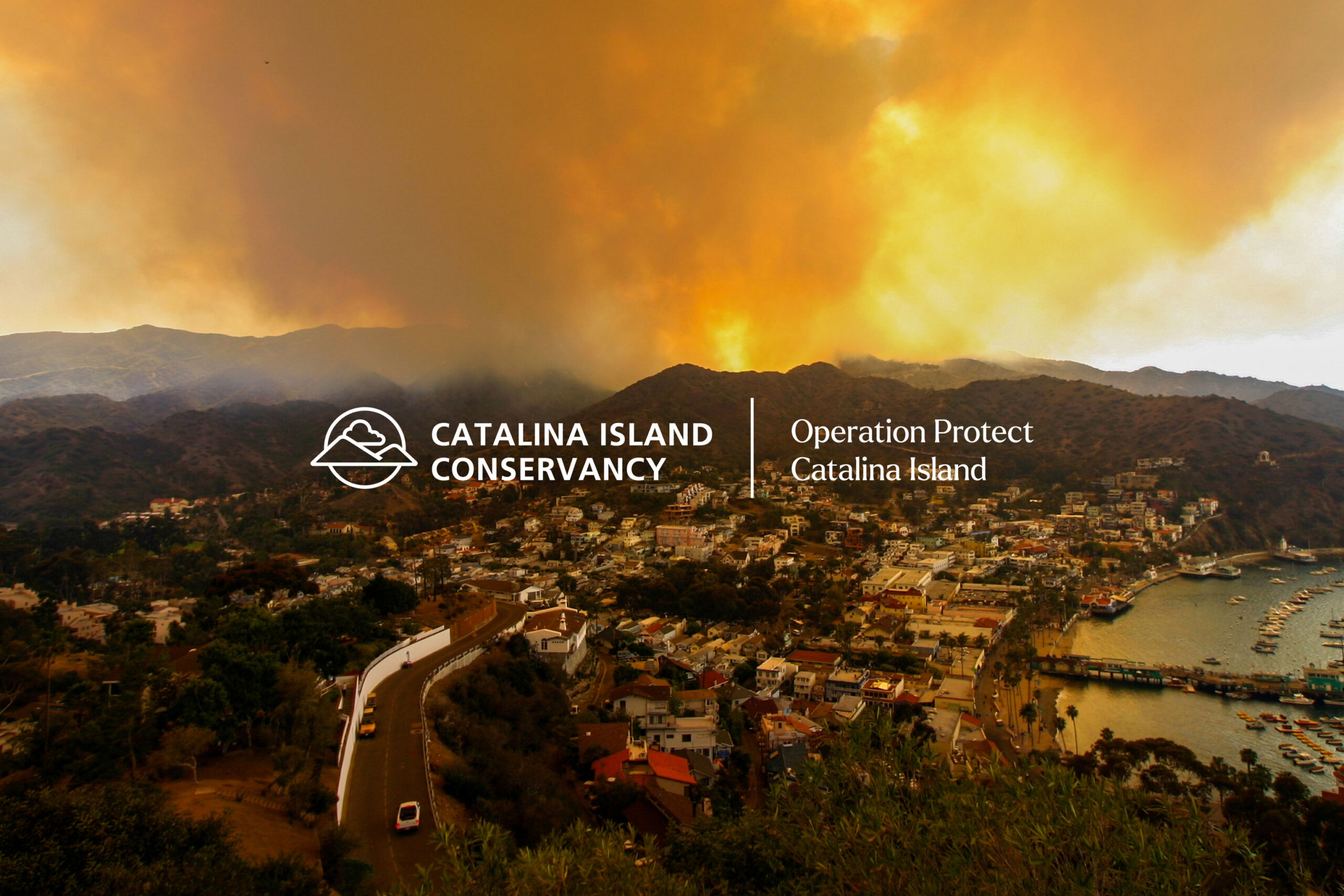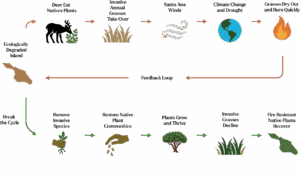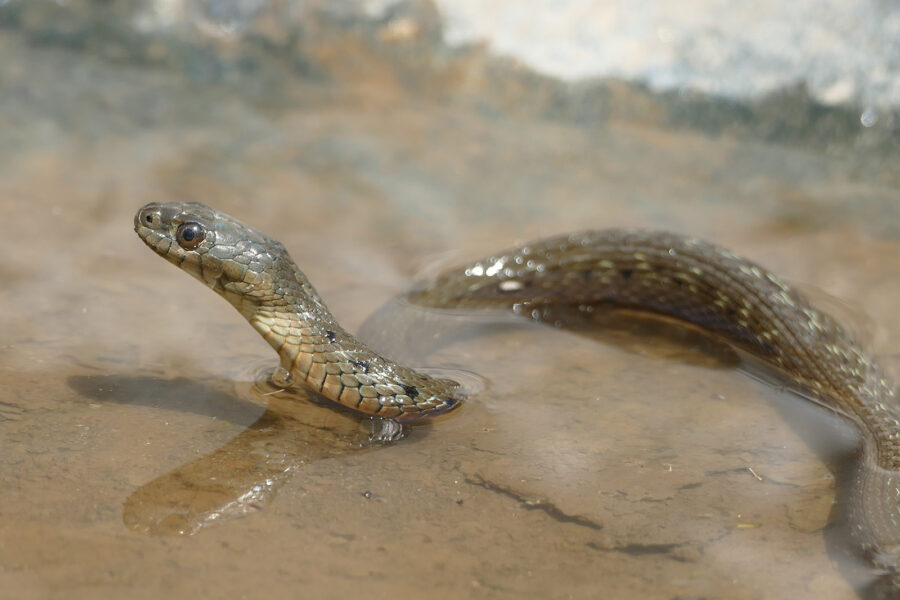Catalina Island’s Survival Plan: A 30-Year Effort to Protect Against Wildfire, Restore Ecosystems
ConservationThe Catalina Island Conservancy announced in October its Operation Protect Catalina plan to safeguard the people, livelihoods and native species that depend on the Island.

The Catalina Island Conservancy has announced “Operation Protect Catalina Island,” a comprehensive 30-year restoration plan designed to reduce wildfire risk, safeguard the Island’s freshwater supply and revitalize native plant and animal species. The initiative, rooted in community safety, marks a pivotal shift in addressing the Island’s escalating environmental threats.
CAL FIRE, California’s Department of Forestry and Fire Protection, designates Catalina Island as a Very High Fire Hazard Severity Zone—its highest risk category.
“January’s wind-driven fires in the Palisades and Altadena were a wake-up call for every community in Southern California, confirming that fire season is every season,” said Whitney Latorre, president and CEO of the Catalina Island Conservancy. “On Catalina Island, where steep terrain, historic structures, a visitor-based economy and logistical challenges converge, preparing for wildfire is not optional.”
Action Plans for Resilience
Operation Protect Catalina Island focuses on reducing wildfire risk to safeguard people, livelihoods and native species that depend on Catalina Island. The three main action plans include:
- Establish Healthy Land and Water. Wildfire resilience begins with the land itself. Healthy soil retains water, minimizes erosion and supports native plants, which are more fire-resistant than invasive grasses. These healthy soils and vegetation are crucial for protecting the water sources that feed Catalina’s reservoirs, including Middle Ranch Reservoir, Avalon’s primary freshwater source. The project will target invasive grasses, which now dominate ecosystems across roughly 35% of Catalina Island’s landscape. These fast-burning plants crowd out native shrubs, dry quickly and ignite easily.
- Bring Back Native Plants. Native plants are nature’s best firefighters. Unlike a continuous blanket of invasive grasses, native species often grow with natural spacing and hold more moisture, creating natural firebreaks. Evergreens such as manzanita and toyon help retain soil moisture. The Conservancy will collect wild seeds from Catalina’s native plants, ensuring they are genetically adapted to the Island, and will use direct seeding methods to restore native plant communities.
- Create Balance for Native Species. Invasive mule deer, introduced nearly a century ago, browse native seedlings, preventing recovery after fire and opening the way for flammable invasive grasses to take over. This leads to more frequent and intense wildfires. Sustained, professional ground-based methods for deer removal, conducted under strict safety protocols, are part of the plan. The multi-year effort, expected to occur primarily between 2026 and 2031, is designed to allow native habitats to recover naturally and help break dangerous fire cycles.
Breaking the Cycle
Invasive species on Catalina Island intensify wildfire risk. Recent mainland wildfires are a stark reminder of how quickly wind-driven flames can escalate in dry, steep terrain.
After fire, invasive grasses rebound quickly, crowding out the slower-growing native plants that naturally resist flames. Invasive mule deer accelerate the problem by browsing down young native seedlings, clearing the way for even more invasive grasses to spread.
This cycle leads to hotter, more destructive fires, which in turn allows invasives to expand further. Scientists describe it as a positive feedback loop: the longer it continues, the more difficult it becomes to restore balance and reduce fire risk.
“Every choice we make comes back to wildfire risk. Invasive deer and invasive grasses create a cycle that fuels hotter, faster fires. Protecting native plants is also protecting people, homes and the Island’s wildlife from those fires,” said Lauren Dennhardt, senior director of conservation.

Community Feedback Shapes the Plan
A key element of Operation Protect Catalina Island is its responsiveness to community input. The deer-removal component of the original proposal drew concern last year from some in the community. In response, the Conservancy engaged with residents, elected leaders and scientists to revise its approach.
“We heard the community’s strongest message clearly: no aerial shooting of invasive mule deer,” Latorre said. “In response, the Conservancy has shifted its plan to use on-the-ground methods, carried out under strict safety protocols as part of a multi-year effort.”
During early phases of the project, the Conservancy will continue its locals-only hunting program during the traditional season, allowing residents to put meat in their freezers as broader restoration work begins. The Conservancy has also received many letters of support from numerous local organizations, political representatives and community members.
Wildfire Prevention Efforts
Beyond the long-term plan, the Conservancy has rolled out its wildfire prevention and awareness plan. This includes the “Be Fire Free For Fox Sake” campaign, daily fire danger levels posted at catalinaconservancy.org/firefree, and close coordination with the Los Angeles County Fire Department, Avalon City Fire and Southern California Edison.
In 2024, Conservancy crews cleared brush on more than 700 acres, treated highly flammable invasive plants across 150 acres and maintained 165 miles of roads and trails that double as firebreaks and access routes. Eleven Conservancy staff members, including rangers, are now trained as wildland firefighters and equipped to assist under L.A. County’s leadership.
Looking Ahead
The project will begin with a fenced, 10-acre pilot restoration area at Airport in the Sky to test and refine methods before scaling to a 105-acre high-priority restoration zone. Landscape monitoring across 60 long-term plots, first established nearly two decades ago, will track changes in plant cover, species diversity and ground conditions.
“This work will take decades, but the choice is clear,” Latorre said. “We must protect the Island we all depend on, together.”
For more information, visit catalinaconservancy.org/protect.


